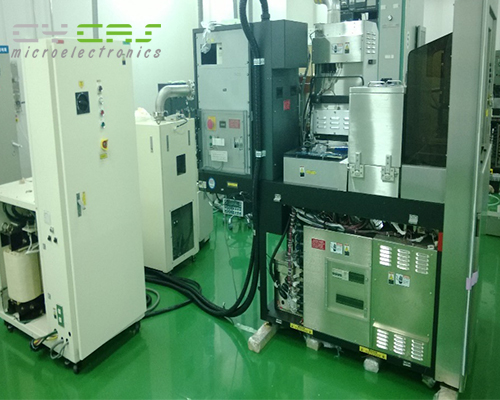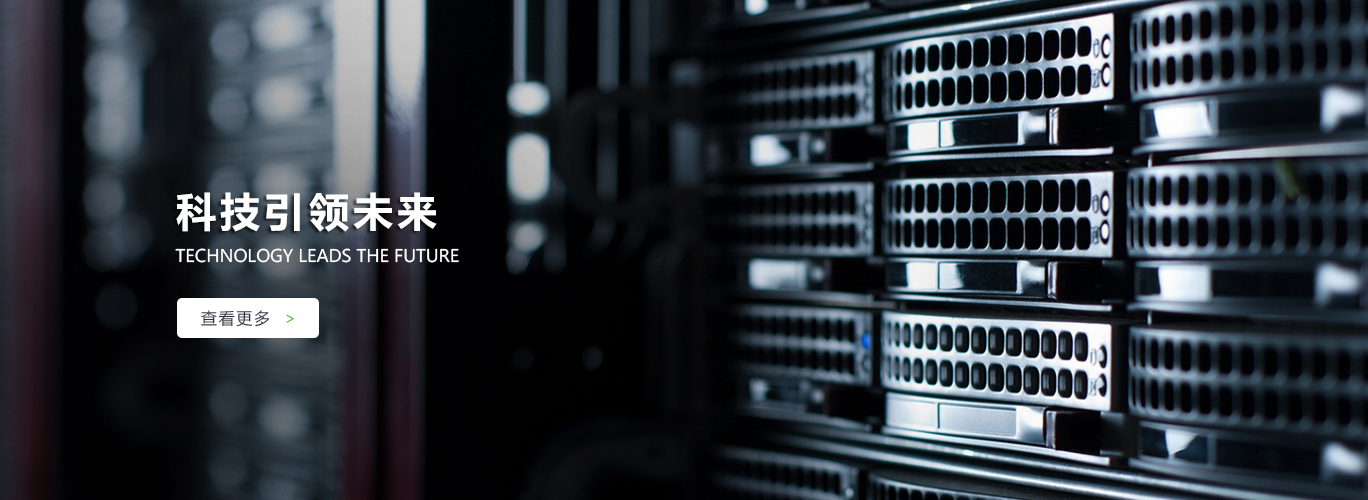新闻资讯
联系我们
名 称:苏州赛森电子科技有限公司
电 话:0512-58987901
传 真:0512-58987201
邮 箱:sales@cycas.com
地 址:江苏省张家港经济开发区福新路1202号 215600PRC
网 址:www.cycas.com
Name: Suzhou cycas Microelectronics Co., Ltd.
Tel.: 0512-58987901
Fax: 0512-58987201
Email: sales@cycas.com
Address: No.1202,Fuxin Road,Zhangjiagang Economic Development Zone,Jiangsu Province 215600PRC
Website: www.cycas.com
等离子刻蚀机通常有几种形式?How many kinds of plasma etchers are there?
发布日期:2018-02-01 作者:www.cycas.com 点击:
等离子刻蚀机通常有三种形式:等离子体刻蚀、离子轰击和两种形式的结合反应离子刻蚀(Reactive Ion Etching),下表给出三种刻蚀的特点对照。
离子轰击顾名思义是利用高能量惰性气体离子轰击硅片表面,达到溅射刻蚀的作用。因为采用这种方法所以可以得到非常小的特征尺寸和垂直的侧壁形貌。这是一种“通用"的刻蚀方式,可以在任何材料上形成图形,如钛、金等,可惜离子轰击有其致命弱点:刻蚀速率低下同时选择性比较差,能达到3:1以属罕见。
等离子体刻蚀的优势不仅在于快速的刻蚀速率同时可获得良好的物理形貌,还可以通过对反应气体的选择达到针对光刻胶和衬底的高选择比。但是因为整个过程完全是化学反应所以对材料的刻蚀是各向同性的,随着工艺尺寸的持续缩小,这一缺点愈显突出,使它的应用越来越越受到限制,一般仅用于对特征形貌没有要求的去胶(Ashing)工艺。
反应离子刻蚀是上述两种刻蚀方法相结合的产物,它是利用有化学反应性气体产生具有化学活性的基团和离子。经过电场加速的高能离子轰击被刻蚀材料,产生损伤的表面,这进一步加速了活性刻蚀反应基团与被刻蚀材料的反应速率,正是这种化学和物理反应的相互促进使得反应离子刻蚀具有上述两种干法刻蚀所没有的优越性:良好的形貌控制能力(各向异性);较高的选择比;可以接受的刻速率。正是它的这些优越性使得它成为目前应用范围最为广泛的干法刻蚀,所以现在我们提到的干法刻蚀一般都是指反应离子刻蚀。

当刻蚀气体被通入刻蚀反应腔中,在射频电场的作用下产生等离子体辉光放电,反应气体分解成各种中性的化学活性基团,分子、电子、离子;由于电子和离子的质量不同使得质量较轻的电子能够响应射频电场的变化而离子却不能,正是这种差异在电极上产生负偏压 Vdc(Negative DC bias) ,离子在负偏压的加速下轰击硅片表面形成反应离子刻蚀;一个持续的干法刻蚀必须要满足这些条件:在反应腔内有源源不断的自由基团;硅片必须靠等离子体足够近以便反应基团可以扩散到其表面;反应物应被硅片表面吸附以持续化学反应;挥发性的生成物应可从硅片表面解吸附并被抽出反应腔。上面的任一种条件末达到刻蚀过程都会中断。
There are generally three forms of plasma etching: plasma etching, ion bombardment and two forms of combined reactive ion etching. The following table shows the characteristics of three kinds of etching.
As the name implies, ion bombardment is to bombard the surface of silicon wafer with high-energy inert gas ions to achieve the effect of sputtering and etching. Because of this method, very small feature size and vertical side wall morphology can be obtained. This is a "universal" etching method, which can form patterns on any material, such as titanium, gold, etc. unfortunately, ion bombardment has its fatal weakness: low etching rate and poor selectivity, which can reach 3:1 is rare.
The advantages of plasma etching are not only the fast etching rate and good physical morphology, but also the high selection ratio for photoresist and substrate through the selection of reactive gas. But because the whole process is completely chemical reaction, the etching of the material is isotropic. With the continuous reduction of the process size, this disadvantage becomes more and more prominent, which makes its application more and more limited. Generally, it is only used in the ashing process which does not require the characteristic morphology.
Reactive ion etching is the product of the combination of the above two etching methods. It uses chemically reactive gases to produce chemically active groups and ions. The high energy ions accelerated by electric field bombard the etched material and produce the damaged surface, which further accelerates the reaction rate between the reactive etching reaction group and the etched material. It is the mutual promotion of chemical and physical reactions that makes the reactive ion etching have the advantages that the above two dry etching methods do not have: good morphology control ability (anisotropy); high selection The acceptable rate of engraving. Because of its advantages, it has become the most widely used dry etching at present, so the dry etching we mentioned now generally refers to reactive ion etching.
When the etching gas is introduced into the etching reaction chamber, a plasma glow discharge is generated under the action of RF electric field, and the reaction gas is decomposed into various neutral chemical active groups, molecules, electrons and ions; because of the different mass of electrons and ions, the lighter electrons can respond to the change of RF electric field, while the ions cannot, which is the difference that produces negative bias on the electrode Voltage VDC (negative DC bias) Under the acceleration of negative bias voltage, ions bombard the surface of silicon wafer to form reactive ion etching; a continuous dry etching must meet these conditions: there are continuous free groups in the reaction chamber; silicon wafer must be close enough to the plasma so that the reactive groups can diffuse to its surface; reactants should be adsorbed on the surface of silicon wafer for continuous chemical reaction; volatile products should be able to Desorption from the wafer surface and extraction of the reaction chamber. Any of the above conditions will interrupt the etching process.
本文网址:http://www.cycas.com/news/370.html
相关标签:等离子刻蚀机
最近浏览:
相关产品:
相关新闻:
- 等离子表面处理技术也具有以下优势Plasma surface treatment technology also has the following advantages
- 怎么选等离子清洗机设备厂商呢?How to choose plasma cleaning equipment manufacturers?
- 真空等离子清洗原理Principle of vacuum plasma cleaning
- 等离子清洗机在手机行业中的应用Application of plasma cleaning machine in mobile phone industry
- 真空等离子清洗产品特点Characteristics of vacuum plasma cleaning products
- A complete set of equipment for surface modification, surface activation, etching and nano coating of plasma cleaning machine等离子体清洗机表面改性、表面活化、刻蚀、纳米涂层一台设备全搞定
- 等离子体表面处理的技术及应用Technology and application of plasma surface treatment
- 等离子体表面处理的原理Principle of plasma surface treatment
- A complete set of equipment for surface modification, surface activation, etching and nano coating of plasma cleaning machine等离子体清洗机表面改性、表面活化、刻蚀、纳米涂层一台设备全搞定 A complete set of equipment for surface modification, surface activation, etching and nano coating
- 等离子清洗机效果如何评估 How to evaluate the effect of plasma cleaning machine?

